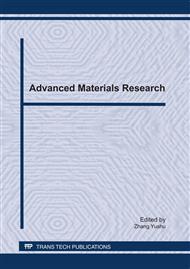p.201
p.206
p.211
p.216
p.221
p.226
p.231
p.236
p.241
Shell Body Nose Forming by Rotary Swaging Process
Abstract:
Studies on the forming characteristics by a rotary swaging process using the sub-scale specimens have been carried out to obtain a shell body nose of desirable quality. To analyze the changes of the nose thickness and length at the respective reduction of inside diameter, the finite element simulations were carried out. As a result, the desired target dimension is satisfied with the diameter reduction of more than 64 % for the given preform. The thickness of nose area increased up to 56.1 % from initial thickness of 2.62 mm to 4.09 mm after swaging. The values of the hardness before and after swaging were 208 HV and 325 HV, respectively. To analyze the dimensional changes (length and thickness) of nose area with decreasing inside diameter, the rotary swaging test was carried out for two different diameter reductions such as 65 % and 67 %. The lengths of nose area for the diameter reductions are 11.79 mm in 65 % and 12.53 mm in 67 %, respectively. At the diameter reduction of more than 67%, the crack occurs when the localized strain hardening reduces ductility in internal area. Therefore, the nose area should be formed from 64% to 67% reduction in target inner diameter.
Info:
Periodical:
Pages:
221-225
Citation:
Online since:
February 2011
Authors:
Price:
Сopyright:
© 2011 Trans Tech Publications Ltd. All Rights Reserved
Share:
Citation:


